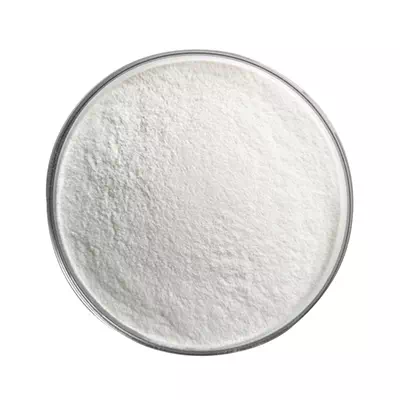

CAS number:128-37-0
molecular formula:C15H24O
molecular weight:220.35
EINECS number:204-881-4
BHT (BAGS);BHT FCC/NF;BHT,GRANULAR,FCC;BHT,GRANULAR,TECHNICAL;BUTYLATEDHYDROXYTOLUENE,GRANULAR,NF;(Z)-retro-αretro-Methyl-αButylated hydroxytoluene Manufacturer
Analytical standards; antioxidants; general reagents; phenol; pharmaceutical intermediates; antioxidants; food and feed antioxidants; food and feed additives; catalysts and additives; chemical additives; empagliflozin; reference substances; antioxidants Oxygen BHT; organic chemical raw materials; raw materials; biochemical industry; inorganic salts; chemical intermediates; chemical products-organic chemical industry; chemical raw materials; organic chemical raw materials; pharmaceutical intermediates; organic chemical raw materials; chemical industry; antioxidants; food additives; Feed additives; Feed storage additives; Aromatic hydrocarbons; Phenols; Small molecule inhibitors; Organic chemicals; APIs; Pharmaceutical raw materials; Biochemical reagents; Agricultural and environmental standards; Synthetic material intermediates; Plastic additives; Oil additives; Antioxidants BHT (264, 501); Russia BHT (264, Chemicalbook501); conventional organic chemicals; flavors and fragrances; biochemical reagents - other chemical reagents; dibutyl hydroxytoluene; other raw materials; raw materials; impurities reference; food additives; chemical materials ;Chemical Materials;Preservatives;Bulk Chemicals;General Biochemical Reagents-Organic Acids;Chemical Reagents;Monomer Fragrance;Industrial/FineChemicals;AromaticHydrocarbons(substituted)&Derivatives;Antioxidant;Biochemistry;Aromatics;BHT;antioxidants;Foodadditive;J's;Basic organic reagents; alcohols; inorganic chemistry
Antioxidant 264 is an excellent general-purpose phenolic antioxidant. It is non-toxic, non-flammable, non-corrosive, and has good storage stability. It can inhibit or delay the oxidative degradation of plastic or rubber and prolong its service life. Appearance is white or light yellow crystalline powder, soluble in benzene, toluene, methanol, ethanol, acetone, carbon tetrachloride, acetic acid, grease, ethyl ester and gasoline and other solvents, insoluble in water and dilute caustic soda solution. It is an excellent antioxidant additive for various petroleum products. It is widely used in various lubricating oils, gasoline, paraffin and various raw materials to prevent the chemicalbook of the acid value or viscosity of lubricating oil and fuel oil from rising. As a food antioxidant and stabilizer in food-grade plastics and packaged foods, it can delay the rancidity of food. Can also be used for polyethylene (PE), polystyrene (PS), PP (polypropylene), polyvinyl chloride, ABS resin, polyester, cellulose resin and foam (especially white or light-colored products), food Grade plastics, natural rubber, synthetic rubber (styrene-butadiene, nitrile-butadiene, polyurethane, butadiene rubber, etc.), animal and vegetable oils, and food, cosmetics and other products containing animal and vegetable oils. The reference dosage is generally 0.1%-1.0%.
| Melting point | 69-73°C(lit.) |
| Boiling point | 265°C(lit.) |
| Density | 1.048 |
| Vapour density | 7.6(vsair) |
| Vapor Pressure | <0.01mmHg(20°C) |
| FEMA | 2184|BUTYLATEDHYDROXYTOLUENE |
| Refractive index | 1.4859 |
| Flash point | 127 °C |
| Storage conditions | 2-8°C |
| Solubility | methanol:0.1g/mL,clear,colorless |
| Shape | Crystals |
| Acidity coefficient(pKa) | pKa14(H2Ot=25c=0.002to0.01)(Uncertain) |
| Color | white |
| Odor | faintcharacteristicodChemicalbookor |
| Water solubility | insoluble |
| Merck | 14,1548 |
| BRN | 1911640 |
| Exposure Limits | ACGIH:TWA2mg/m3NIOSH:TWA10mg/m3 |
| Stability | Stable,butlight-sensitive.Incompatiblewithacidchlorides,acidanhydrides,brass,copper,copperalloys,steel,bases,oxidizingagents.Combustible. |
| InChIKey | NLZUEZXRPGMBCV-UHFFFAOYSA-N |
| CAS database | 128-37-0(CAS DataBase Reference) |
White crystals. When exposed to light, the color turns yellow and gradually darkens. Soluble in benzene, toluene, methanol, methyl ethyl ketone, ethanol, isopropanol, petroleum ether, linseed oil, insoluble in water and 10 ℃ caustic soda solution.
● Used as anti-aging agent for rubber and plastics, antioxidant for gasoline, transformer oil, turbine oil, animal and vegetable oil, food, etc.
● Additives for Plastics
● BHT is an oil-soluble antioxidant widely used at home and abroad. Although it is highly toxic, it has strong antioxidant capacity, good heat resistance and stability, neither specific odor nor color reaction with metal ions, and its price is low, only 1/5 to 1/5 of that of BHA. 8, my country is still used as the main antioxidant. It is generally used in conjunction with BHA, and citric acid or other organic acids are used as synergists. my country stipulates that it can be used in edible oils and fats, fried foods, biscuits, instant noodles, quick-cooked rice, canned nuts, dried fish products and cured meat products, with a maximum usage of 0.2g/kg. This product also has a certain antibacterial effect, but it is weaker than BHA.
● BHT acts as a feed antioxidant, protecting feed vitamins and preventing oxidative loss of fat and protein. It also has a certain antibacterial effect. The maximum dosage is 150g/t. BHT is an oil-soluble antioxidant widely used at home and abroad. Although it is highly toxic, it has strong anti-oxidative ability, good heat resistance and stability, neither specific odor nor color reaction with metal ions, etc., and the price is low, only 1/8-1/ of BHA. 5, my country is still used as the main antioxidant. It is generally used in conjunction with BHA, and citric acid or other organic acids are used as synergists.
● As a general-purpose phenolic antioxidant. Widely used in polymer materials, petroleum products and food processing industries. This product is a commonly used rubber antioxidant. It has a certain protective effect on thermal and oxygen aging, and can also inhibit copper damage. It has no anti-ozone ability when used alone, but it can be used in combination with anti-ozonants and waxes to prevent damage to vulcanized rubber by various factors of weather. It can also be used as a gelling inhibitor in styrene-butadiene rubber. The general dosage in rubber is 0.5-3 parts. When the dosage is increased to 3-5 parts, it will not spray frost. This product can also be used as a stabilizer in the treatment and storage of synthetic rubber, and can be used for styrene-butadiene rubber, cis-butadiene rubber, ethylene-propylene rubber, neoprene and other rubber species. Antioxidant 264 is an effective antioxidant in some polymer materials. This product is an effective stabilizer in polyethylene, polyvinyl chloride (consumption 0.01-0.1%) and polyvinyl ether. Antioxidant 264 is an excellent antioxidant additive for various petroleum products. Good oil solubility. This product can also be used as an antioxidant in the food processing industry, used in foods containing more oil. The dosage in oil, butter, dried fish and shellfish products, salted fish and shellfish, frozen whale meat, etc. is less than 0.2 g/kg, and in chewing gum is less than 0.75 g/kg. The usage of this product includes dipping method, direct mixing method, mixing method after dissolving in ethanol and spraying method. The United States, Japan and the European Community all use this product as a legal feed additive. The European Community stipulates that the maximum dosage in the feed is 150ppm, which can be used in various feeds.
● for organic synthesis
● It is suitable as an additive for anti-oxidation and anti-glue of petroleum products, and an anti-aging agent for plastics and rubber.
● Used as antioxidant in petroleum products, fuel, rubber, plastic, food, feed, medicine, etc.
● Organic Synthesis. Antioxidant
● After isobutanol is vaporized, it is dehydrated in the presence of a catalyst to generate isobutene, which is obtained by alkylation with p-cresol. Kg/ton isobutanol (95%) 1400 p-cresol (80%) 1000
● (1) Prepared from p-cresol and tert-butanol. Put p-cresol and tert-butanol into the reaction kettle at a ratio of 1:1.1 (molar ratio) to heat and dissolve, then add catalyst phosphoric acid, and react at 65-70°C with vigorous stirring. The reaction product was first washed with 10% sodium hydroxide solution until alkaline, and then washed with water until neutral. The solvent is removed by distillation, and then recrystallized from ethanol to obtain the finished product. (2) Prepared from p-cresol and isobutylene. According to the chemical formula, the isobutene is passed into a mixture of 98% p-cresol and 2% concentrated sulfuric acid, and the reaction is carried out at 65-70 ° C for 5 hours, and the conversion rate of p-cresol can reach 95%. The acid was washed with hot water at 60°C, and then washed with 10% NaOH and hot water successively until neutral to obtain a crude product. Dissolve the crude product in 50% ethanol at 80-90°C, add 0.5% thiourea, filter while hot, spin dry and dry to obtain the finished product. The yield is 90%-95%, the purity is 99.5%, and the melting point is higher than 69.5 ° C. The main and auxiliary towers are connected in series in industry. First, add p-cresol and catalyst to the main and auxiliary towers, and then control the temperature of the main tower to 65-80 °C, and control the temperature of the auxiliary tower to 50-70 °C. The isobutene gas is introduced from the bottom of the main tower, most of it reacts with p-cresol in the main tower, and the remaining part comes out from the top of the main tower and enters the bottom of the auxiliary tower, and further reacts with p-cresol. The reaction period of the main tower is controlled for another 4-5h. When the reaction is over, stop the flow of isobutene gas, add 20% NaOH solution, and bubbling with compressed gas. The neutralized alkylation product is separated into crude product by distillation column (8 theoretical trays). The latter is dissolved in 95% ethanol, ion exchanged to remove inorganic salts, cooled to 10-20°C for crystallization, separation, and vacuum drying to obtain a product with a melting point greater than 69°C.
● (1) Put p-cresol and tert-butanol in a molar ratio of 1:1.1 into a reactor for heating and dissolving. Under the action of the catalyst phosphoric acid, the reaction is carried out at 65-70 °C under vigorous stirring; after the reaction is completed, the reaction product is washed with 10% sodium hydroxide solution until alkaline, and then washed with water until neutral; remove the solvent and recrystallize with ethanol The finished product is obtained. CH3C6H4OH+(CH3)3COH[H3PO4]→BHT(2) pass isobutylene in a mixture of 98% p-cresol and 2% concentrated sulfuric acid, react at 65~70℃ for 5h; wash off the acid with hot water at 60℃, Then wash with 10% NaOH and hot water successively until neutral to obtain crude product. Dissolve the crude product in 50% hot ethanol, add 0.5% thiourea, filter while hot, spin to dry, and dry to obtain the finished product. The yield is as high as 90% to 95%, the purity is 99.5%, and the melting point is >69.5°C. In industry, the main and auxiliary towers are connected in series. First add p-cresol and catalyst into the main and auxiliary towers, the temperature of the main tower is controlled at 65-80°C, and the temperature of the auxiliary tower is controlled at 50-70°C. The isobutene gas is introduced from the bottom of the main tower, most of it reacts with p-cresol in the main tower, and the remaining part comes out from the top of the main tower and enters the bottom of the auxiliary tower to further react with p-cresol. The reaction period of the main tower is controlled at 4-5h. When the reaction is over, the isobutene gas is stopped, 20% NaOH solution is added, and the compressed gas is used for bubbling. The neutralized alkylation product was separated by distillation column (8 theoretical trays) to obtain crude product. The latter is dissolved in 95% ethanol, ion exchanged to remove inorganic salts, cooled to 10-20°C for crystallization, separation, and vacuum drying to obtain a product with a melting point greater than 69°C. CH3C6H4OH+(CH3)2C〓CH2[H2SO4]→BHT
● It is a pressurized reaction between p-cresol and isobutylene in the presence of a catalyst concentrated sulfuric acid or phosphoric acid and a dehydrating agent alumina. The product is distilled and recrystallized from ethanol.
Sales hotline:

 Scan and consult wechat customer service
Scan and consult wechat customer service